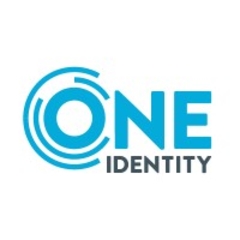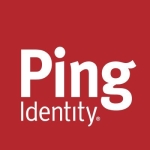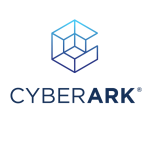We utilize One Identity Manager for several key processes. Primarily, it manages the entire employee lifecycle, including joiners, movers, and leavers, for identity management. Additionally, we use its attestation module to conduct bi-annual recertification campaigns, validating existing access rights. Recently, we expanded its use to manage cloud entitlements, including EntraID.
We manage user and access management for over 20 SAP systems using One Identity Manager and do not handle any disconnected SAP accounts.
One Identity Manager governs SAP accounts by linking them to employee identities, ensuring access is managed throughout the identity life cycle. This direct link enables automated processes, such as terminating SAP accounts and associated assignments when an employee is terminated.
One Identity Manager, certified by SAP, delivers specialized workflows and business logic through a dedicated connector for SAP R3 and native support for HANA systems, enabling direct connection to HANA databases. It offers numerous out-of-the-box templates for SAP, automatically loading schemas for users, roles, and assignments upon SAP module activation. While most use cases are covered by these templates, customization is possible for specific needs.
With a tool like One Identity, our organization can manage accounts across multiple target systems from a central identity management solution. This centralized data allows for flexible governance reporting, including custom SQL queries and pre-built reports, to validate information. Governance practices vary between companies but often involve specific access controls, timely re-certifications, and validations by data owners. For example, some companies implement frameworks with defined views, access levels, and re-certification processes to ensure data integrity and security.
The ease of customizing One Identity Manager depends on the user's skill set. Compared to three similar products, One Identity Manager is more straightforward to customize, particularly when modifying VB.NET code or writing SQL statements for reports. While some coding knowledge is necessary, the tool's predefined templates and SDK samples offer helpful references and starting points.
The user experience of the legacy web portal is unsatisfactory due to limited customization options and occasional slowness, especially during backend processes like attestation. However, One Identity is moving towards an Angular-based portal in version eight dot two and newer, which offers greater flexibility, customizability, and improved performance. This new portal may provide a more satisfactory user experience overall.
One Identity Manager helps manage the company structure for dynamic application provisioning. Our IAM system reads the company and department structures to automatically assign entitlements. Based on this structure, users are created, and permissions are assigned.
The business role functionality of One Identity Manager is crucial for businesses, especially from an audit and SOC perspective. Whether utilizing One Identity, SailPoint, or another tool, a solid IAM solution should include comprehensive audit trails, streamlined request processes, detailed approval workflow history, and other essential functionalities to ensure compliance and security.
We have begun extending governance with EntraID and are evaluating the Starling connector which provides access to many other SaaS-based applications.
Over the time we've used One Identity Manager since 2017, it has significantly improved our organization by automating the joiner, mover, and leaver process across all target systems. No more manual account management tasks are needed, which include account creation, updates, or termination when a user leaves the company. It has substantially reduced manual role assignments and made processes fully automated. The major benefit is the attestation process, conducted once or twice a year based on requirements, which ensures no unauthorized or unwanted accesses are left unchecked. It also provides clear reports on user statistics, such as active users, new joiners, and leavers.
We initially started with a small scope but have since expanded to connect numerous systems, automating the mobile egress process. Tasks like account creation, updates, and termination are now fully automated through IAM solutions, eliminating manual intervention. This automation also removes the need for teams to assign roles manually. A significant benefit is the ability to conduct periodic access attestation campaigns, ensuring only authorized users have access. One Identity Manager facilitates this process and provides comprehensive reporting, giving management clear visibility into user activity, including the number of active and inactive users, new hires, and departures.
One Identity Manager helps minimize governance gaps across our testing, development, and production environments. We utilize a three-tiered setup with a transport mechanism to move changes from the development environment to the quality assurance environment and finally to the production environment.
One Identity Manager enhances privileged governance to mitigate security risks associated with privileged users. A custom solution within the One Identity framework allows users to link multiple secondary identities to their primary identity for tasks requiring elevated privileges. This framework provides a robust privilege access management system within the One Identity environment.
One Identity Manager streamlines application access, compliance and auditing. It supports the SOX audit process conducted twice or thrice yearly. For applications connected to the One Identity Manager, governance is managed through the IAM solution itself. Instead of checking the target system, administrators use the One Identity Manager to validate requests, approvals, denials and assignment periods for connected applications.
One Identity Manager empowers application owners and business managers to make independent application governance decisions, eliminating the need for IT involvement and siloed teams. Once applications are onboarded to One Identity self-service model allows users to request roles and the defined approvers to approve them, streamlining the process and removing complexity for application owners. They no longer need dedicated teams for identity and access management or manual user access reviews for compliance requirements as One Identity Manager automates these functions. This simplifies operations and centralizes control, improving efficiency and reducing administrative burden.
Zero Trust is a broad security framework with varied implementations. Currently, our Zero Trust implementation focuses on identity and access management, specifically for privileged roles. To prevent unauthorized or accidental access, a three-stage approval process is required for privileged role requests. This ensures that multiple stakeholders validate the access, embodying the Zero Trust principle of never trust, always verify. While this is just one aspect of Zero Trust, it significantly enhances our security posture by preventing unauthorized access to sensitive systems and data.
Having worked with SailPoint and other identity management tools, I've found One Identity Manager to be quite handy, especially after seven years of experience with it. The framework is robust and flexible, allowing companies to easily adopt and extend the schema as needed. Unlike other tools I've used, One Identity Manager offers a high degree of customization. Even if the out-of-the-box templates or processes don't meet our company's specific requirements, we can readily adapt them, modify them, and build our own processes and templates.
The One Identity Manager web portal needs simplification. While a new Angular portal was introduced with version 8.2, the knowledge base lacks sufficient information and resources. Even with an Angular developer or a One Identity specialist, a knowledge gap exists due to the combination of AngularJS and One Identity schema expertise required. This makes it difficult to find resources that can effectively utilize the portal, highlighting the need for a more user-friendly interface.
One Identity Manager currently offers Long Term Support only for version 9.0. All other versions have a two-year lifecycle with extended support. For organizations managing a complex environment with numerous connected systems, users, and assignments, upgrading every two years is impractical. Extending support for regular versions by one or two years would benefit clients in this situation.
One Identity Manager is stable, although there have been bugs. Sometimes product versions are released with many bugs, which affects stability. There is a need for extended support for regular versions, especially in large-scale environments where upgrades every two years are not feasible.
I would rate the stability of One Identity Manager eight out of ten.
We sometimes face delays in response from the technical support of One Identity. While we use premier support, the experience can be inconsistent, prompting us to sometimes engage technical and success managers for faster resolutions.
We used SAP IDM before switching to One Identity Manager. The scope with SAP IDM was limited due to its inability to connect multiple systems except Active Directory and SAP system. We looked for a solution that provided greater flexibility in terms of cloud adoption and custom connectors, which SAP IDM did not offer at that time.
While the technical deployment of One Identity Manager can be completed in approximately one month, the true challenge lies in its organizational integration. Developing and connecting the system to existing infrastructure is a complex process that can take several months. Furthermore, ongoing maintenance and onboarding of new applications require continuous effort, making it an ongoing project rather than a one-time deployment.
The return on investment was evident in the company's decision to automate processes using the One Identity Manager solution. Previously, separate application teams with dedicated personnel performed specific tasks, leading to higher costs and inefficiencies. With the implementation of the One Identity Manager tasks became automated, resulting in significant cost savings and streamlined processes.
I would rate One Identity Manager eight out of ten.
I would recommend One Identity Manager to companies, especially those that might lack prior expertise in identity management. Its predefined framework and comprehensive set of templates make it adaptable and easy to implement.
Our system is distributed across multiple locations globally, with various components and load balancers deployed in each location, including our disaster recovery sites. We have over 50,000 users.
One Identity Manager requires maintenance across its various components, including the tool itself, the database, the job server, and the web component. This maintenance ensures the environment remains operational and efficient. Maintenance requirements vary by component. For instance, web nodes undergo weekly restarts and cache clearing, job servers require service restarts, and other servers need periodic cache cleaning. Different elements have different maintenance schedules: weekly for some monthly for others, and weekly for the database. Overall, maintenance plans are tailored to the specific needs of each component.



















